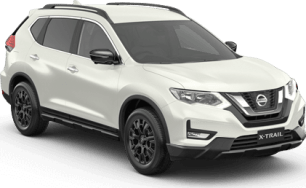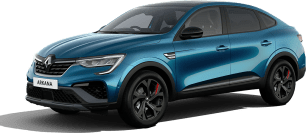The Renault Arkana looks better than it drives.
Scratch that. It looks a lot better than it drives.
Frankly, this car is downright poor in low speed city or urban driving, where the engine’s start-stop system, turbo lag and the dual-clutch automatic transmission plague the drive experience to the point of abject frustration.
I really, really disliked driving the Arkana in town. I also didn’t like driving it out of my driveway, which runs downhill from a down-hill street, and reversing it out of my driveway and taking off up the street actually scared some passersby.
Why? Because the transmission let the car roll forward while in reverse. There is an Auto Hold button which should have stopped this, but maybe I didn’t push the brake pedal hard enough to activate it.
Instead, I overcompensated and applied too much throttle. That spun the tyres on my pavers ever so slightly, so I braked and then backed out over the kerb point onto the road, rear of the car facing downhill, and it again rolled back while I shifted to drive. Then, again, the tyres scrabbled for grip on the road below once the transmission sorted itself out and the turbo kicked in, whooshing before the engine emitted its fuzzy hum and the car took off faster than expected.
It was bad. And it happened a couple of times, too.
And there were other instances where it was less than good, too. The transmission constantly swapped between gears under light acceleration at higher speeds or with adaptive cruise control on, a lot of that down to gradient changes. So, if you live in a hilly area like me (the Blue Mountains) you will notice how busy the transmission is with the top three gears - even just to maintain 80km/h. And it doesn’t maintain its speed very well at all using adaptive cruise control, either.
It was even worse when you’re dealing with low speed driving. The indecisiveness of DCT made for moments of hesitation before sudden explosions of progress - not fun in the wet. That means that it will be laggy on occasion, while also sometimes feeling like it’s taking off too quickly at times. You will get wheelspin even on dry surfaces, and I have experienced this during my time in the car multiple times.
The fact is, you need to be mindful of how you apply throttle in this car. You shouldn’t have to think this hard when you’re driving an automatic car, in my opinion. Many of its rivals with DCT transmissions are a lot better than this - the Hyundai Kona, for instance, and the slightly larger VW Tiguan, too.
The steering is light in the standard MySense drive mode, which you can configure to your tastes to a degree. Choosing the Sport drive mode (or just the Sport steering setting in MySense) adds extra weight but doesn’t add any extra feel to the experience at all, so there’s little to find in terms of enjoyment for a keen driver, with no real "feel" from the steering at all, and indeed it is a bit slow to react, with a larger than expected turning circle (11.2m). That can make for some multi-move turnarounds, and I found the reversing camera often lagged dangerously behind the realtime situation.
As is the case with a lot of SUVs in the segment, the steering is designed to be easy around town rather than enjoyable on the open road. So if you’re expecting a Megane RS-like drive experience, buy that car instead.
The suspension was quite sure of itself. There is a firm edge to it and it felt reasonably controlled on the open road, but at lower speeds when you hit deep divots or potholes, the body gets very upset as the wheels seem to drop in to holes. It’s really good over speed humps, however.
While it is a front-wheel drive (2WD) SUV, I did some very light off-road driving on a gravel track in the Blue Mountains and found that suspension to be overly rigid over corrugated parts, bouncing the car around on its big 18-inch wheels. The transmission, again, played havoc with progress, in combination with the eager traction control system which, at least, helped me get where I needed to go. There’s 199mm of ground clearance, which is good for an SUV of this ilk.
So who is it for, then?
I’d say a long-distance commuter might find this car a good partner. It is pretty refined at highway and freeway pace, and that’s where the suspension and transmission are least annoying. And hey, that could help you get the most out of those long service intervals, too. Newcastle-to-Sydney or Geelong-to-Melbourne drivers, this could be one to take a look at.






.png)











































.png)




















 copy.png)














